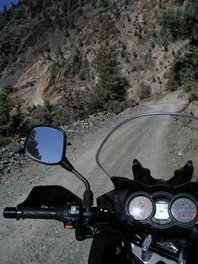I spotted some vineyards in the spring from the uplands of Etiwanda on a walk. The entire landscape spread out before me used to be covered in grapevines when I was a kid in the area in the 60s and 70s. Now, re-familiarizing myself with the place 50 years later, I was surprised to find a scrap left over just a bit east, on the other side of the 15 freeway in Fontana. My visits to the remnant vineyard began with the unmistakable yellow-green of spring foliage and bunches of hard green grapes. When I looked again at intervals in the summer and fall, I saw the fruit ripen, redden, and, finally, dry up to form raisins.
Vineyards in California in the 21st century spread across the landscape from the famous Napa Valley to further south than my Cucamonga curiosity. What typifies them is an excess of care. A basic criterion is the stake-and-wire arrangement where plants are trained up trunks like bared forearms to the flexible branches and tendrils that bear or will bear the fruit. For the grape picker using a curved knife, this makes the bunches accessible from a standing or sitting position. Mechanical pickers--motorized gantlets of rubber paddles-- violently strip the grapes from the vines, along with leaves, branches, mice and snakes. For these monstrous machines, vines groomed to the wires fit between their wheels, allowing them to harvest one row at a time. Fencing outside the vineyards is either formidable, in the case of industrial operations in isolated expanses among the hills, or "twee" closer to the highway, sometimes using thickets of roses. Relating to the wine-tasting tourist, this fencing is reminiscent of the white staked fences seen on horse ranches in tonier rural areas. The vines in Fontana are not on stakes and wires. They rise perhaps as much as 2 feet above the ground, not the 5 or 6 feet of staked vineyards.
Each bush here in Fontana sand spreads out to about 4 feet in diameter. Bordered by highways and freeways, they grow on what was clearly desert sand before their entry on the scene. I meander in unobstructed from the shoulder of the road into the rows, just as the litter and debris of passing traffic does. No fence interferes, nor is there any sign warning the wanderer away. A powerline right of way cutting through the vineyard is equally open: cars sometimes drive under the wires, sometimes leaving trash piles, despite signs there prohibiting entry. Sight lines are long: the interloper can be spotted from as much as mile away, but I have not been questioned there. The few weeds are familiar to anyone who grew up crossing vacant lots as a child in the Southern California. The vineyard does not appear cared for, though occasional tire tracks between some rows say otherwise, and the weeds might be more numerous I suppose.
As an urban fruit gleaner and an amateur fermenter, I am immediately drawn the question of whether or not this fruit is utilized. Certainly, the potential harvest would be large, and while I find the idea of wasting that much fruit abhorrent, everything around me in the car-centric urban sprawl of Rancho Cucamonga tells me that waste is A-OK.
Well, these grapes apparently do not go to waste. Next, I will write about how I found out. I also found out significantly more than I had ever intended.
